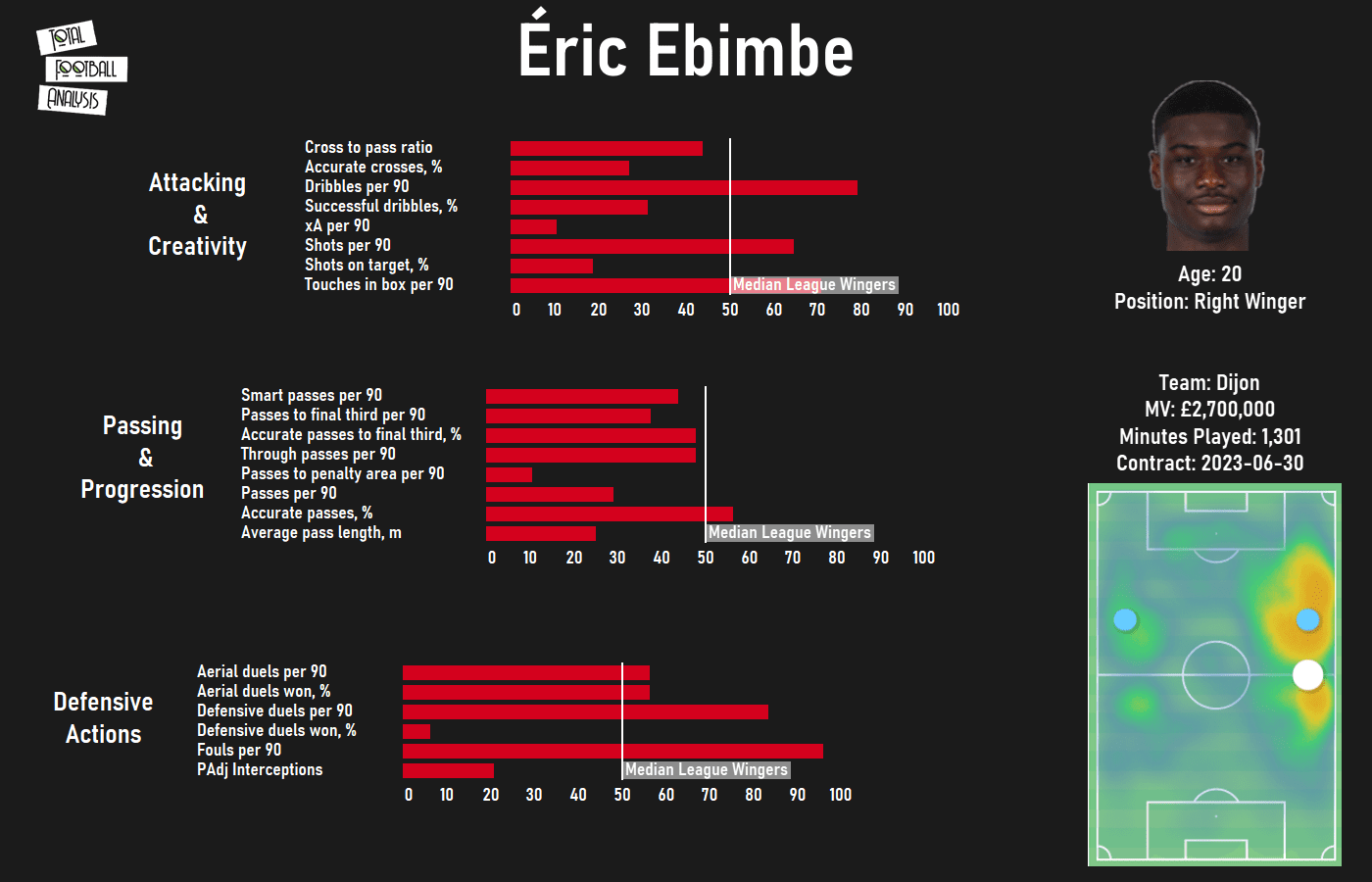
Who Is Éric Ebimbe?
Eric Ebimbe is a 20-year-old French winger or midfielder who is currently on loan at Dijon FCO from Paris St-Germain.
Ebimbe is a French U21 international but also holds Cameroonian citizenship through his father’s side.
Ebimbe is listed at 183cm | 6’ and is predominantly right-footed.
Ebimbe is a player who tends to play from the right-hand side of the attack, although his profile does suggest that he would be an interesting free 8 on the right-hand side of the midfield three.
He is a product of the youth academy at Paris St-Germain and he signed his first professional contract at the club in 2018.
This followed a loan spell for the 2019/20 season with Le Havre in the second tier, where he played 25 matches.
With that loan spell proving successful as the youngster gained his first exposure to first-team football this season saw a move to Dijon as Ebimbe sought to test himself against top-level competition.
At the time of writing Ebimbe has played 17 times for Dijon and he has adapted to this level well.
This, of course, does not mean that Ebimbe can expect to make the breakthrough when he returns to his parent club in the summer.
Paris St-Germain are renowned for developing young players who then have no realistic pathway to first-team football at the club.
The list of players who have left the club, or who were born and raised in Paris before moving elsewhere for their footballing breakthrough, is incredibly long and there is every chance that Ebimbe will end up moving elsewhere to establish himself as a first-team player.
Éric Ebimbe Style Of Play
As a right-footed player who plays from the right-hand side you would expect Ebimbe to be a traditional winger type who attacks on the outside of defensive players when he is in possession of the ball.
Instead the youngster is a dynamic force in the attacking phase with a broad and powerful frame.
He carries the ball positively and will attack from outside in a diagonal line to access the half-space or central areas.
It is not unusual to see Ebimbe burst past two or even three defensive players in a movement that creates chaos for the opposition defensive structure.
He is a creative passer who likes to make probing passes when crossing into the final third.
What is especially interesting about Ebimbe in the attacking phase, however, is that he displays a tendency to move back towards the ball when Dijon are building the attack.
He takes up intelligent positions in pockets of space and can receive the ball in space to help his team to progress the ball cleanly.
In the defensive phase Ebimbe is active both in terms of pressing and engaging the ball and when moving back to provide cover for his fullback.
At the time of writing the youngster is averaging 7.53 defensive duels per 90 with a success rate of 51.4%.
He also recovers on average 4.81 balls per 90 in the opposition half.
Éric Ebimbe Carrying the ball
There is no doubt that in the attacking phase Ebimbe’s capacity to progress the ball is a real strength of his game.
At the time or writing the young winger is averaging 6.47 dribbles per 90 with a 53.9% success rate.
This is combined with 2.64 touches in the opposition penalty area which shows that Ebimbe tends to play high up the pitch.
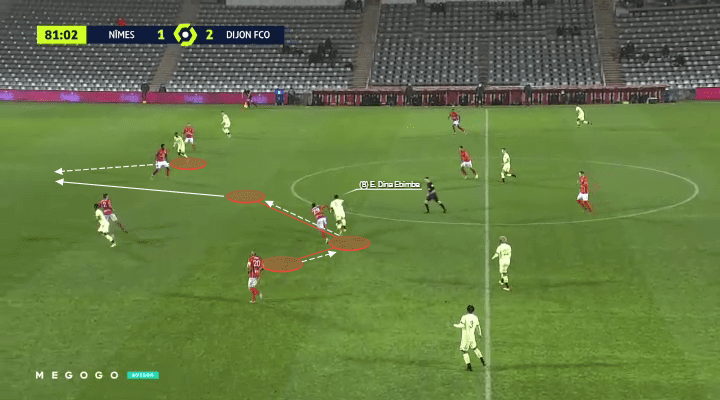
Here we see an example of Ebimbe in action in the match between Dijon and Nimes.
This is a moment of attacking transition for Dijon as they are looking to exploit gaps in the opposition’s defensive structure.
Ebimbe has drifted across into central spaces to collect the ball and as he receives possession he is immediately under pressure.
Ebimbe is positive in possession as he takes the ball and then cuts back and then through the defensive player before finding a through ball that breaks the line of the opposition’s defensive line and releases a forward in behind.
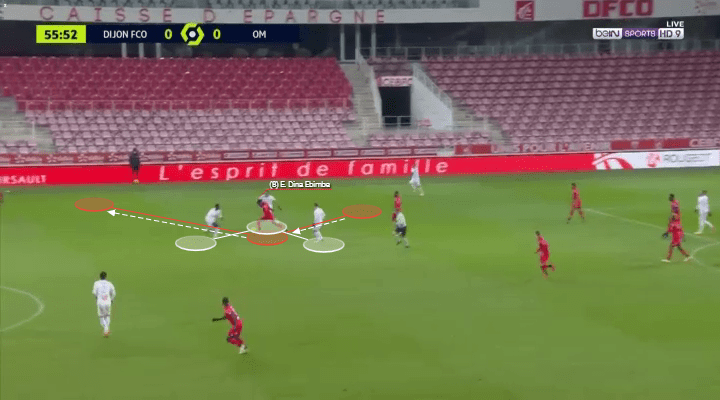
This time we see Ebimbe in action in the match between Dijon and Marseille as Ebimbe receives the ball in his own half of the field before driving forwards in order to progress his team into more advanced positions.
As he collects possession he is immediately put under pressure.
Ebimbe, however, is extremely pass resistant as he can take physical contact before holding off and turning the defender.
Indeed, if defensive players get too tight to him then he can turn them and burst past but if they give him too much space to receive the ball then he can face them up and beat them with a dribble.
This time he is positive in attacking towards the opposition half.
He engages and beats three defensive players with quick ball manipulation and powerful movements through the press.
In this example, he comfortably takes three opposition players out of the game.
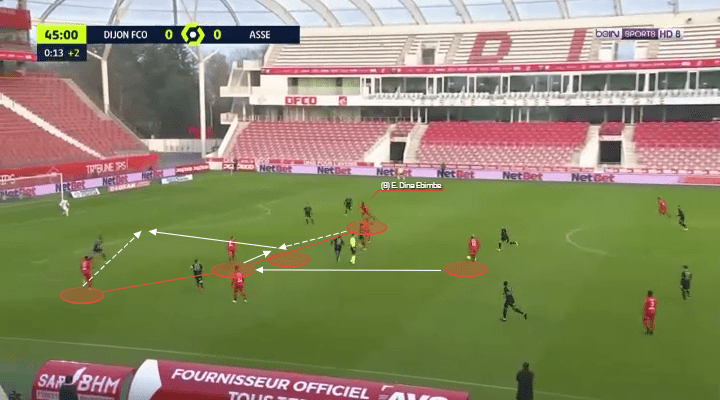
As well as being effective when carrying the ball through the thirds and progressing the attack for his team we also see Ebimbe make intelligent movements in order to receive the ball in the final third and interlink with his teammates.
In this example we see Ebimbe acting in a central role as the ball is on the left-hand side of the attack and he has occupied a central line.
As the ball is played in, initially to the ‘9’, Ebimbe moves towards the ball and connects the attack.
He receives the ball when moving in a sideways motion but can still find the diagonal run of the left-sided attack to release that player through and into space.
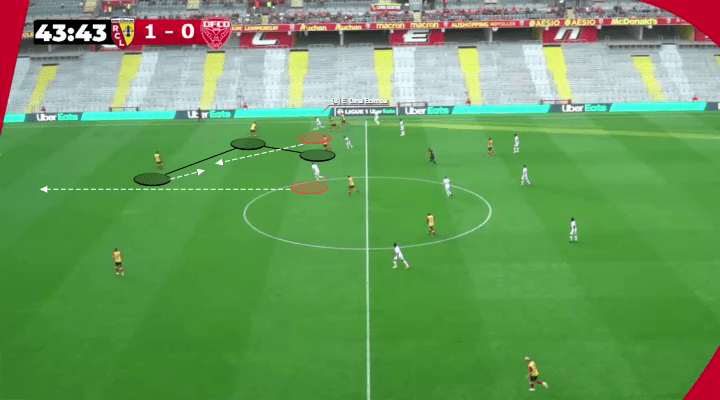
Ebimbe has an eye for a creative pass and he averages 0.46 key passes per 90 and 1.44 passes to the penalty area per 90 along with 1.5 crosses per 90.
In this example, we see that Ebimbe has collected possession wide on the right, just inside the opposition half of the pitch.
As we mentioned above you would expect a player with Ebimbe’s profile to take the opportunity in this situation to attack down the outside.
Instead, he immediately moves in a diagonal line to commit and outplay three opposition players.
What is key here, however, is that the young winger then has the quality to release the ball at the right time to access the run of a teammate making a central run in support of the attack.
Éric Ebimbe Helping the ball to progress
When a team looks to progress the ball and attack through positional attacks, as Dijon do, it is important that they have defenders who are capable of progressing the ball cleanly from the first line.
This is only possible, however, if there are players ahead of the ball who understand how to move in order to occupy pockets of space in which they can receive these forward passes.
This is an area in which Ebimbe is extremely strong.
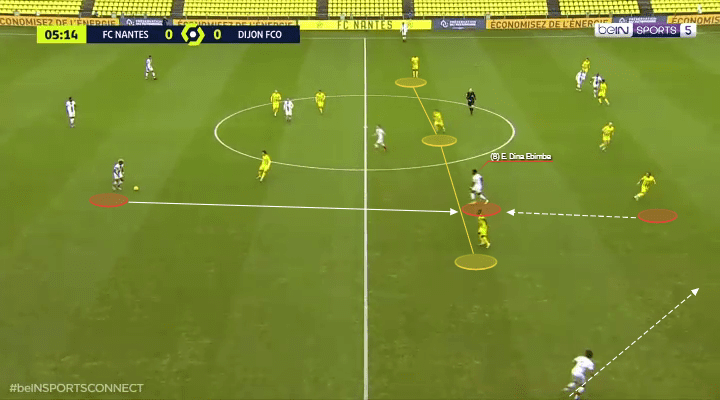
We see an example of this here from the match between Dijon and Nantes with the defender in possession and looking for a progressive pass.
Ebimbe makes the movement back towards the ball from his initial position and ends up occupying the space between two players in Nantes midfield line.
While there is another option with the right-back looking to move high this is a less safe and clean progressive option.
Instead, Ebimbe receives the ball and then can turn and attack the defensive line of the opposition.
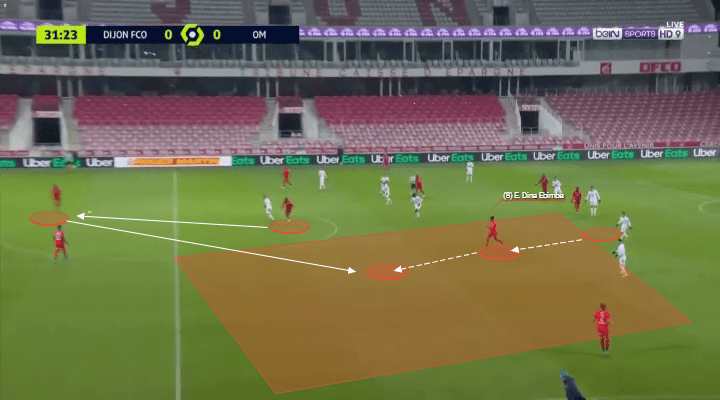
We see another example here with Dijon recycling possession back to the first line when Marseille apply pressure in the midfield.
Once again it is Ebimbe who moves back towards the ball in order to supply an option for the progressive pass to be played into the opposition half.
Éric Ebimbe Weaknesses
While Ebimbe is an effective attacking threat at Ligue 1 level he still needs to add a more effective end product to his game.
He carries a goal threat in terms of the positions that he occupies and the runs that he makes but he does not always translate this into the goals that he should.
Indeed, at the time of writing Ebimbe is averaging 0.07 goals per 90 from an xG of 0.17 goals per 90.
This comes from 1.89 shots per 90.
That is not to say, however, that Ebimbe does not get into good attacking positions.
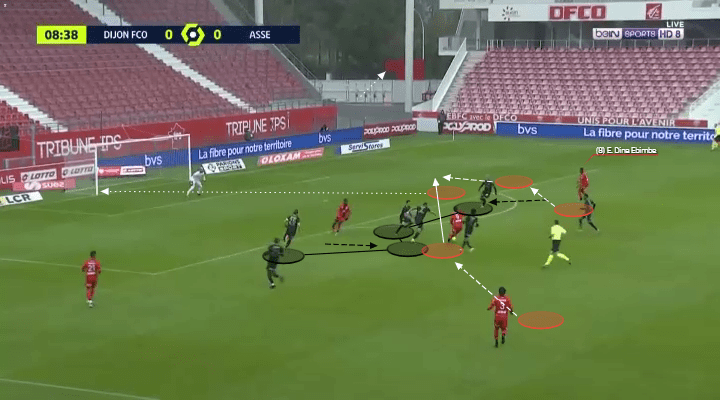
We see an example of this in this image as a midfield player for Dijon carries the ball centrally and commits defensive players to the ball.
As the central defender presses out from the defensive line to engage the ball the left-back for the opposition is dragged inside as cover.
Ebimbe is intelligent enough in these areas to pause and allow separation to build.
He was then in a position to get the through ball and shoot low and hard across goal.
A good idea but the shot was narrowly wide.
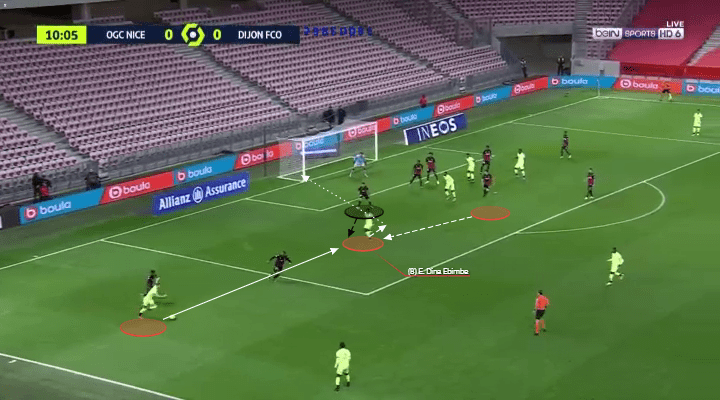
This time Ebimbe makes the opportunity for the shot at goal himself as he makes a clever movement across the areas in order to receive the ball.
As he does so he is put under pressure but he has the balance and quick feet in order to create a yard of space on his right foot before firing low towards the near post.
This time the goalkeeper is down quickly in order to make the save.
Conclusion
At this stage it feels unlikely that Éric Ebimbe will make the breakthrough at first-team level with Paris St-Germain.
Instead, it is increasingly likely that his future will take him elsewhere.
While he is still raw he has an intriguing profile and if his end product can be improved he could become an extremely interesting player over the next 18-24 months.

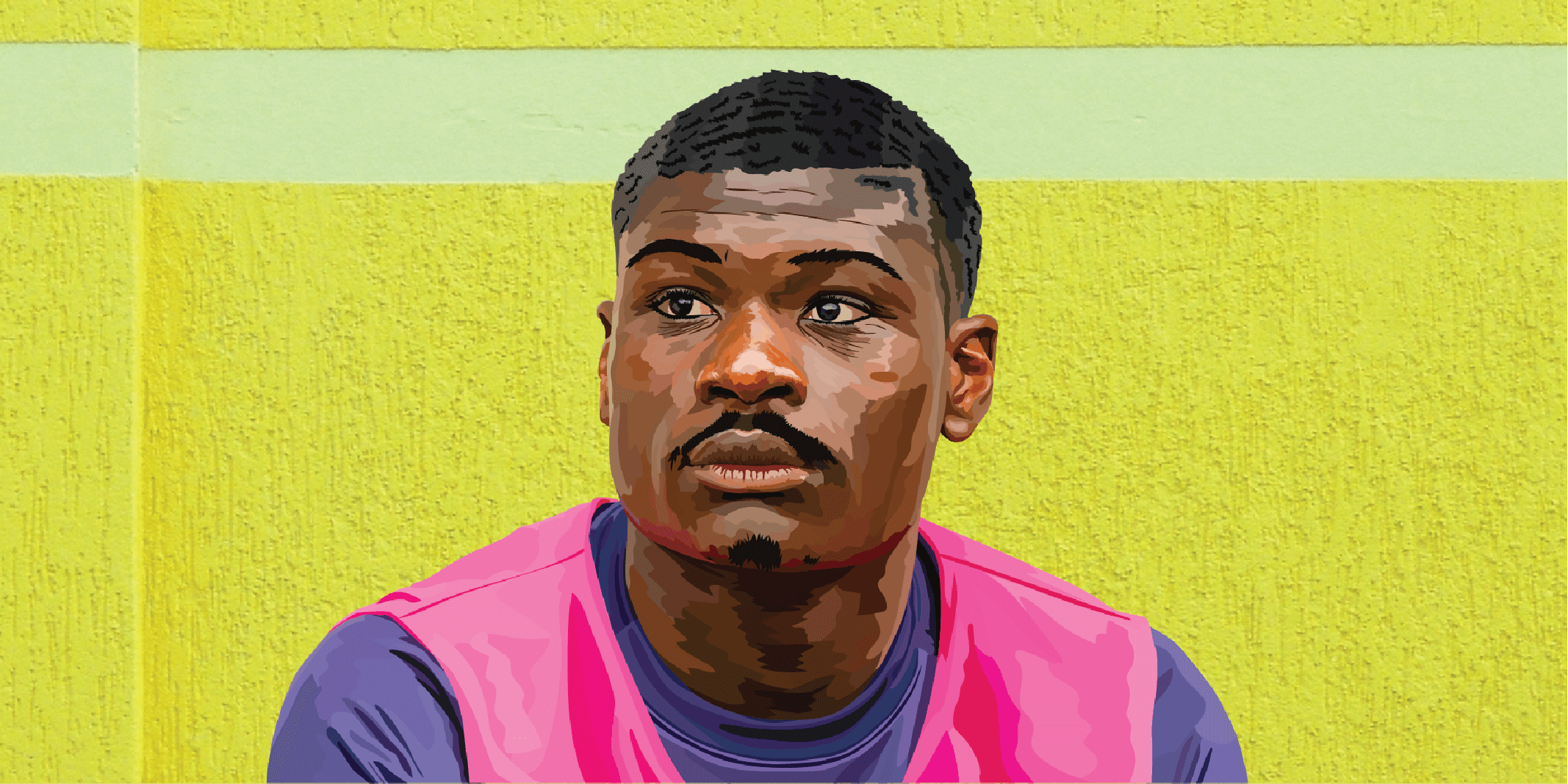



Comments